Advantage Florestal Blog – FSC Certified hardwood lumber products

Garapa is a wood that not only serves as a slab but excels. With a Janka rating high enough to not dent and scratch easily but soft enough it does not dull blades quickly, Garapa makes a great slab. As with Angelim Stone, Garrote has to be dried correctly to get all of its uses correct. It should be dried relatively slowly and consistently so it does not check and crack. Seeing Brazilian Ash as a deck is impressive but when able to see the entire slab, it’s jaw dropping. The sapwood when freshly cut is not distinctly demarcated but the wood oxidizes to its final color, the heartwood becomes distinct from the sapwood. The sapwood stays the yellowish cream color where the heartwood darkens to a beautiful golden brown hue. The amount of figure that is sometimes present is stunning. It can make the figure in the heartwood 3 dimensional look. It takes a good and dry finish when stable. The closed grain and small pores make enjoyable sanding and can be done to a polish-like result. Sharp cutters should be used for surfacing because of the amount of silica that is naturally present in the wood. This can cause difficulty if using low-grade steel or carbide. Cross cutting and ripping is done with fantastic results. Only the highest quality Grapia logs are chosen to be cut into slabs. Some of the best reasons to cut the highest quality logs into slabs are because: Slabs have the highest yield of any form and using the most wood out of a tree is imperative to sustainable harvest which we are committed to A slab that comes from a lesser quality log will be prone to be less stable Voids in some logs mean that they would not be suitable for slabs We believe that offering some of our Muirajuba in the highest possible yield is imperative to keep our wholesalers competitive in an ever changing wood world. Our experience with Amarealao means you can always be assured that we will supply you the very best slabs. Just imagine being able to sell high quality slab that matches some of the lumber you supply. This can be the thing that gives you an edge over your competitors and something very few mills can offer with integrity and quality. Give us a call or email us to see what we have available or what we are expecting to be available shortly.
Common Name: | Info coming soon |
Botanical Name: | Apuleia Leiocarpa |
Indigenous to: | The variety “molaris” is found in the Amazonian forest, mainly in flooded areas. The main species, Apuleia leiocarpa is found mainly in the South of Brazil, in the Atlantic coast forests, easily colonizing cleared areas. |
Modulus of Rupture: | 18,530 lbf/in2 (127.8 MPa) |
Shrinkage: | Radial: 4.2%, Tangential: 7.5%, Volumetric: 11.4%, T/R Ratio: 1.8 |
How is it dried: | kiln-dried (KD) |
Is it dried quickly: | No should be dried slowly |
Stability: | Moderately Stable to Stable |
Exterior Wood Recommendation: | Use class ensured by natural durability: class 2 – inside or under cover (dampness possible)
Species covering the use class 5: YesAgainst dry wood borer attacks:does not require any preservative treatment
In case of risk of temporary humidification: requires appropriate preservative treatment
In case of risk of permanent humidification: use not recommendedThe natural durability of Grapia is very variable. In some cases, this variability can be observed inside
the same piece of wood. This species cannot be used without appropriate preservative treatment for
end-uses under use class 3 except for some parts of a work such as windows, less exposed than
others (entrance doors, shutters, …).
This species naturally covers the use class 5 (end-uses in marine environment or in brackish water)
due to its high silica content. However, it is not recommended to use it in case of strong structural
constraints due to its medium mechanical properties; it is most suitable for end-uses like shipbuilding. |
Fastening Method: | Nailing / screwing: good but pre-drilling is necessary
Gluing: Yes |
Ecosystem impact: | This wood species is not listed in the CITES Appendices or on the IUCN Red List of Threatened Species. |
Toxicity and allergic reactions: | Although severe reactions are uncommon, Garapa has been reported to occasionally cause skin irritation. |
Odor: | Nothing discernable |
Products we manufacture using this species: | decking, flooring, dimensional lumber, E4E, S4S, RS (Rough Sawn), deck tiles, and table slabs |
Other common uses: | Exterior joinery Light carpentry
Heavy carpentry Hydraulic works (seawater)
Ship building (ribs) Cooperage
Turned goods Current furniture or furniture components
Wood frame house Flooring
Industrial or heavy flooring Interior joinery
Ship building Stairs (inside)
Vehicle or container flooring Cabinetwork (high class furniture)
Tool handles (resilient woods) Formwork
Boxes and crates Wood-ware
Note: Finishing is easy but filling is recommended. |
Susceptibility to |
Dry Wood borers: | Durable – sapwood demarcated (risk limited to sapwood) |
Fungi: | Class 3 – moderately durable |
Termites: | Class M – moderately durable |
Treatability: | Class 3 – poorly permeable |
Janka Hardness: | |
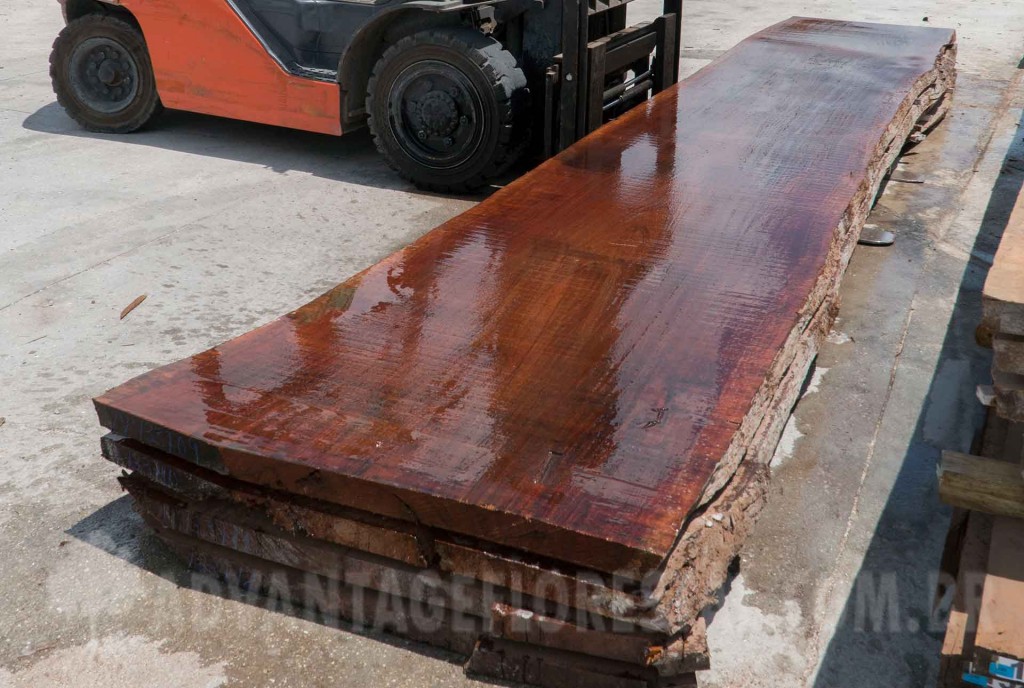
Jatoba is one of those woods that does so well in so many applications. It’s very versatile, rot resistant and naturally decay resistant. There is some grain tension with the wood being so dense and grain structure so tight. Some care has to be taken while surfacing a Jatoba slab due to grain tension. It can have some tear out but is easily solved if feed rates are slowed. It cross-cuts smoothly and sands very well. If it is going to be ripped with the grain, a riving knife is important. When Jatoba is in slab form it is stable and looks fantastic. When a piece is figured it’s like the grain has come alive throughout the slab. The grains almost flow into each other. One of the reasons people don’t use Jatoba as a slab is because they are so used to seeing it as flooring. It has a really thin sapwood line that is distinctly demarcated. The live edge shows off how the grain will be figured in places and its possible to see how the tree has grown. This is a whole new way to look at Brazilian Cherry instead of the traditional flooring application. Imagine being able to offer a live edge slab for a counter top or table top that matches a beautiful floor that someone just bought from you. A few reasons only the highest grade logs are used for slabs are • Slabs have the highest yield of any form and using the most wood out of a tree is imperative to sustainable harvest which we are committed to • A slab that comes from a lesser quality log will be prone to be less stable • Voids in some logs means that they would not be suitable for slabs Not many companies have thought of leaving Courbaril in slab form because of its high value as flooring. We believe that offering some of our Jutai in the highest possible yield is imperative to keep our wholesalers competitive in an ever changing wood world. Our experience with Jatoba means you can always be assured that we will supply you the very best. Give us a call or email us to see what we have available or what we are expecting to be available shortly.
Common Name: | Jatoba, Brazilian Cherry |
Botanical Name: | Hymenaea courbaril |
Indigenous to: | Central America, southern Mexico, northern South America, and the West Indies |
Modulus of Rupture: | 22,510 lbf/in2 (155.2 MPa) |
Shrinkage: | Radial: 4.2%, Tangential: 8.0%, Volumetric: 12.1%, T/R Ratio: 1.9 |
How is it dried: | Info coming soon |
Is it dried quickly: | Normal drying time Initial air drying under cover prior to kiln drying is recommended. Risks of cracks more or less important according to specific gravity. |
Stability: | High Moderately Stable to Stable |
Exterior Wood Recommendation: | Class 3 – not in ground contact, outside |
Fastening Method: | Nailing/screwing: good but pre-drilling is necessary
Gluing: Yes (for interior only)
Note: Gluing must be done with care (very dense wood). |
Ecosystem impact: | This wood species is not listed in the CITES Appendices, and is reported by the IUCN as being a species of least concern. |
Toxicity and allergic reactions: | Although severe reactions are quite uncommon, Jatoba has been reported to cause skin irritation. |
Odor: | No distinguishable odor |
Products we manufacture using this species: | Info coming soon |
Other common uses: | Cabinetwork (high-class furniture)Furniture or furniture components Sliced veneer Industrial or heavy flooring Flooring Stairs (inside) Wood frame house Exterior joinery Exterior paneling Interior paneling Tool handles (resilient woods) Turned goods Shipbuilding (ribs) Vehicle or container flooring Musical instruments Arched goods Wood-ware Sculpture Moulding Cooperage
Note: End-uses under permanent humidification (contact with water or with ground) are possible with the species presenting a very good durability. |
Susceptibility to |
Dry Wood borers: | Durable – sapwood demarcated (risk limited to sapwood) |
Fungi: | Class 2-3 – durable to moderately durable |
Termites: | Class M – moderately durable |
Treatability: | Class 4 – not permeable |
Janka Hardness: | |
For a long time all that Tigerwood was known much better throughout the world as Goncalo Alves or Muiracatiara. The wood has become a staple internationally as a unique wood that provides a very distinct look. Wood lovers understand that every single piece of wood is a one-of-a-kind and no species of wood shows that better than Tigerwood. Displaying its stripes as a slab is absolutely stunning. If the base color is wanted many slabs show up as only the base orang-ish hues of brown without all the wild streaking. Unlike any other wood out there, Tigerwood truly does come in many flavors. Here are 2 reasons why we like to use your tigerwood for creating wood slabs instead of only cutting it into lumber. Slabs have the highest yield of any form and using the most wood is imperative to sustainable harvest A slab that comes from a lesser quality log will be prone to be slightly less stable. Not many companies have thought of leaving Muiracatiara in slab form because of its high value as decking. We believe that offering some of our Goncalo Alves in the highest possible yield is imperative to keep our wholesalers competitive in an ever changing wood world. Our experience with Tigerwood means you can always be assured that we will supply you the very best. Give us a call or email us to see what we have available or what we are expecting to be available shortly. We can export our tigerwood slabs and lumber worldwide, direct from our FSC certified wholesale mill in Brazil.
Common Name: | Goncalo Alves, Tigerwood, Jobillo |
Botanical Name: | Astronium spp. (A. graveolens and A. fraxinifolium) |
Indigenous to: | From Mexico southward to Brazil |
Modulus of Rupture: | 16,970 lbf/in2 (117.0 MPa) |
Shrinkage: | Radial: 4.2%, Tangential: 7.8%, Volumetric: 11.2%, T/R Ratio: 1.9 |
How is it dried: | kiln-dried (KD) |
Is it dried quickly: | Normal Drying Schedule is applicable to thickness lower or equal to 38 mm.
It must be used in compliance with the code of practice.
For thickness from 38 to 75 mm, the air relative humidity should be increased by 5 % at each step.
For thickness over 75 mm, a 10 % increase should be considered |
Stability: | Info coming soon |
Exterior Wood Recommendation: | Class 4 – in ground or fresh water contact |
Fastening Method: | Nailing / screwing: good but pre-drilling is necessary
Gluing: poor not recommended without proper oily wood procedures |
Ecosystem impact: | This wood species is not listed in the CITES Appendices or on the IUCN Red List of Threatened Species. |
Toxicity and allergic reactions: | Although severe reactions are quite uncommon, Goncalo Alves has been reported as a sensitizer. Usually most common reactions simply include eye and skin irritation. |
Odor: | No distinguishable odor |
Product we manufacture using this species: | Decking, hardwood flooring, dimensional lumber, E4E, S4S, RS (Rough Sawn), deck tiles, and wood slabs |
Other common uses: | Cabinetwork (high class furniture)Sliced veneer Flooring Wood-ware Turned goods Exterior joinery Interior joinery Interior panelling Heavy carpentry Musical instruments Tool handles (resilient woods) Sculpture |
Susceptibility to |
Dry Wood borers: | Durable – sapwood demarcated (risk limited to sapwood) |
Fungi: | Class 1 – very durable |
Termites: | Class D – durable |
Treatability: | Class 4 – not permeableAgainst dry wood borer attacks: does not require any preservative treatment
In case of risk of temporary humidification: does not require any preservative treatment
In case of risk of permanent humidification: does not require any preservative treatment |
Janka Hardness: | |




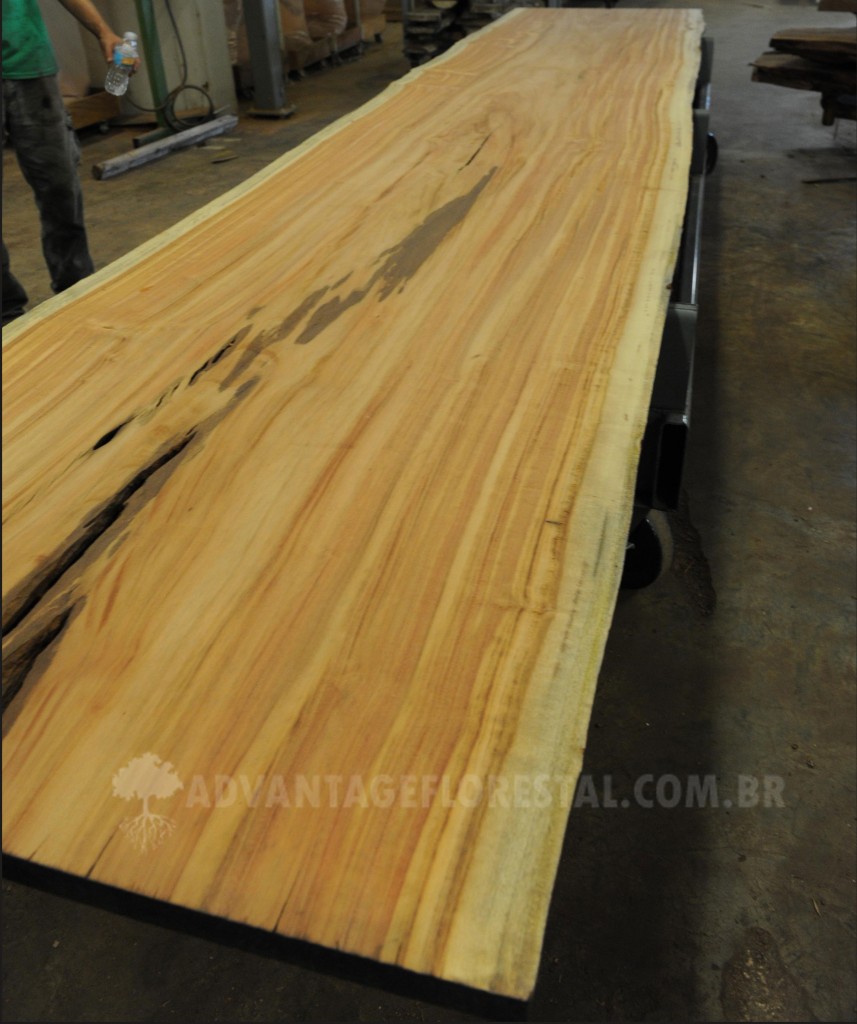
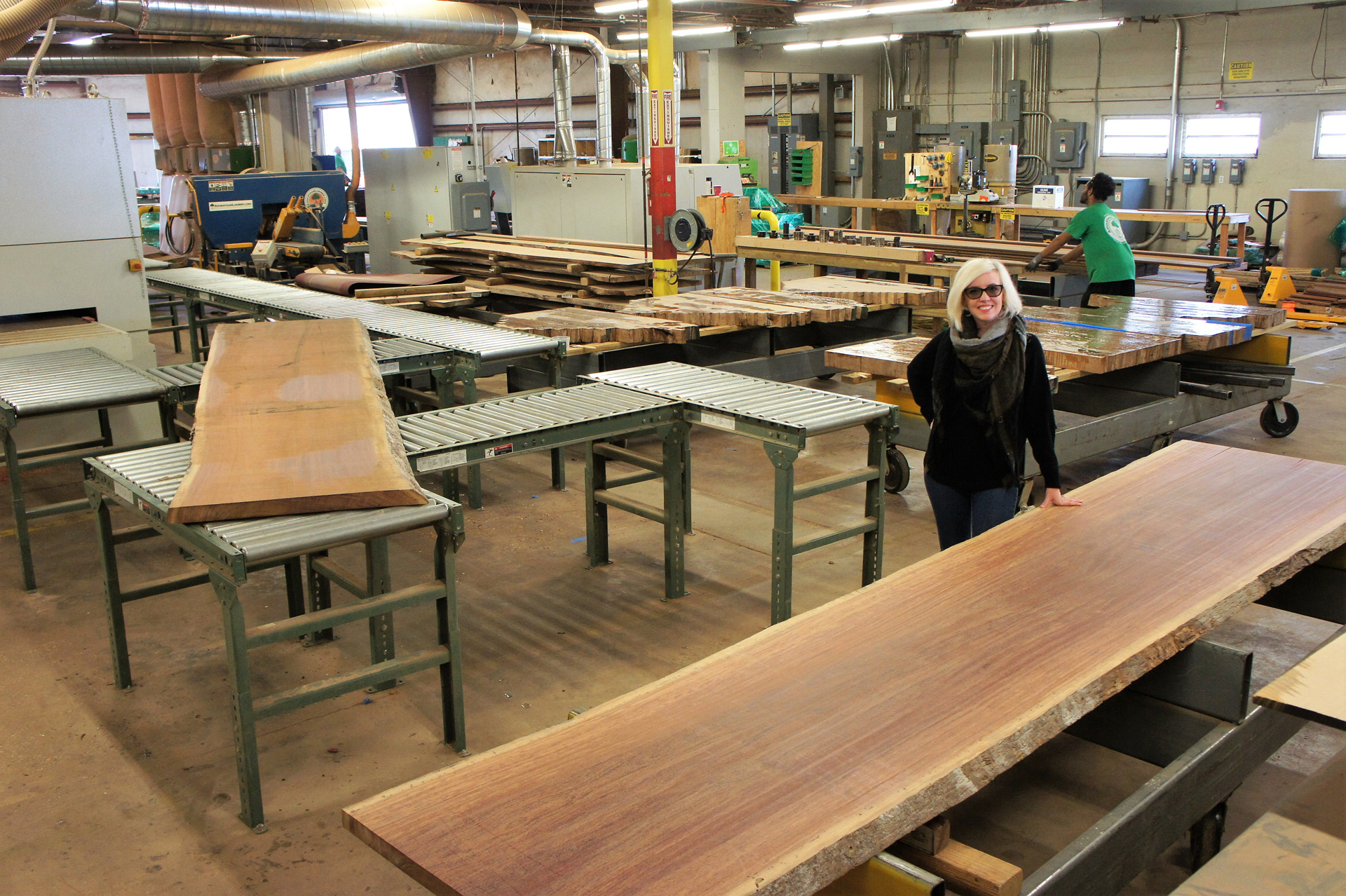

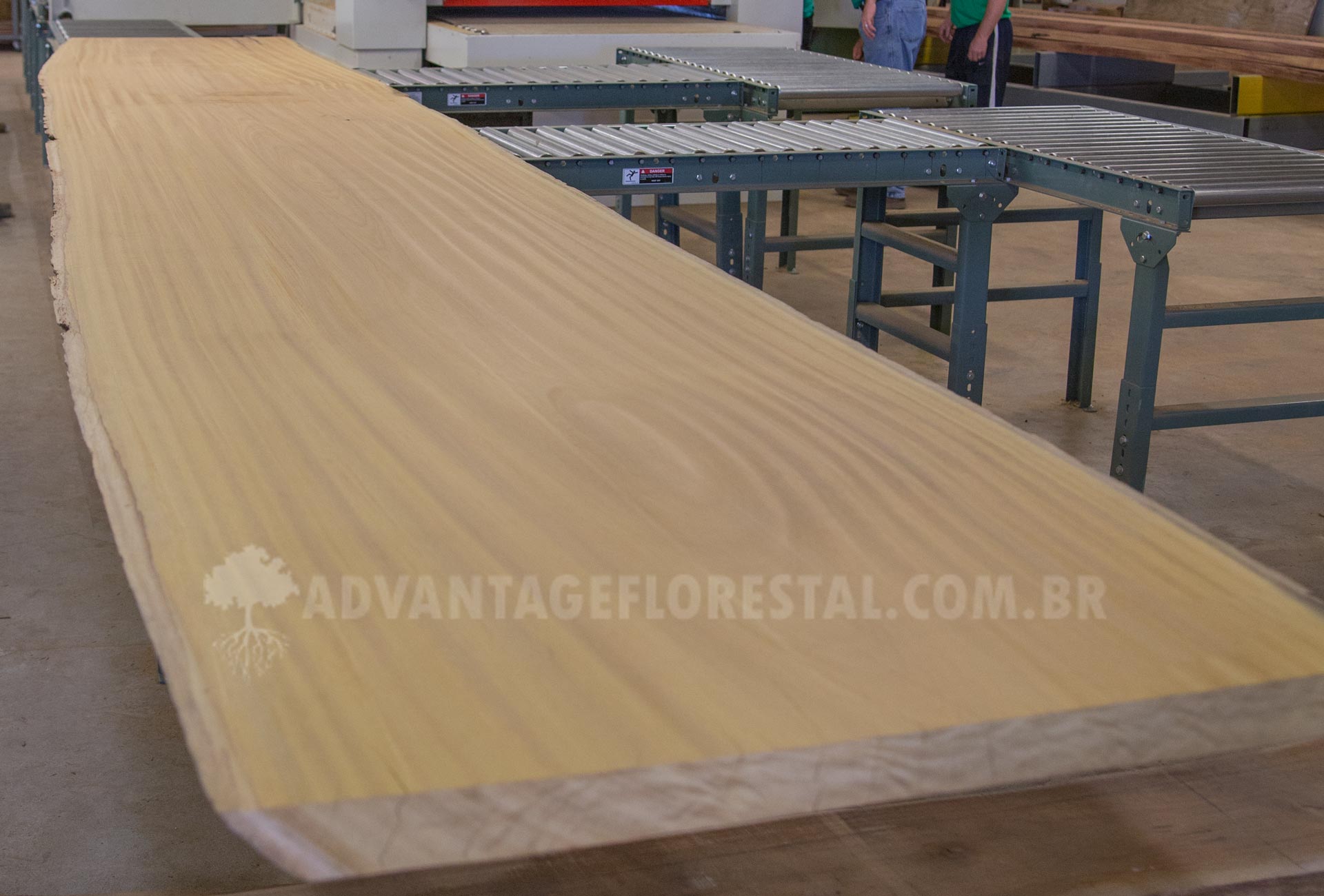
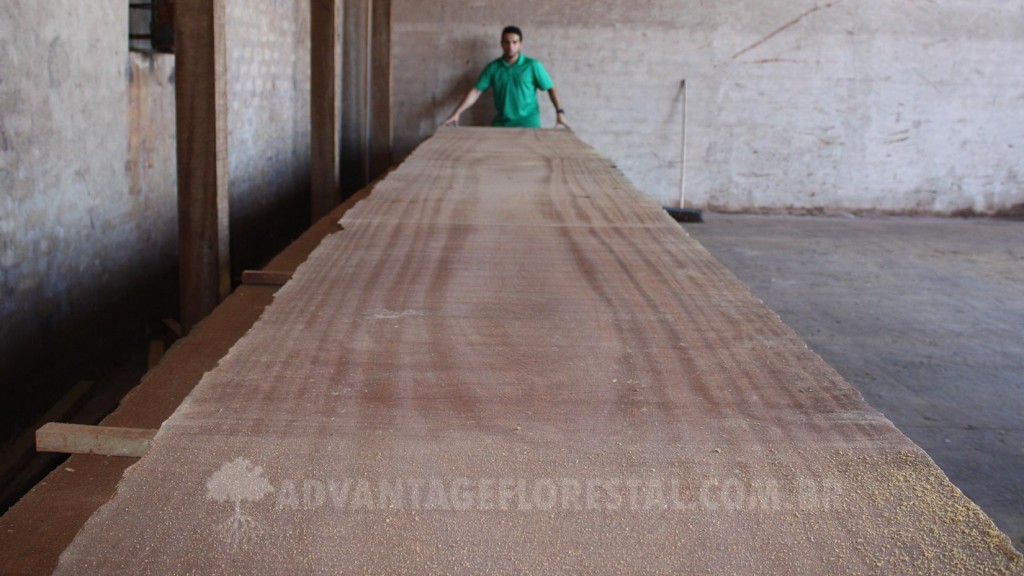
 Cumaru Deck Tiles are inexpensive and easy-to-install. But those are not the only reasons why you want to buy them. Customers who remodel their old patio, balcony, or roof with Advantage Deck Tiles do so because they want a genuinely beautiful outdoor living space that lasts. While settling for painting over their existing surface is always an option, they want something better, more natural.
Cumaru Deck Tiles are inexpensive and easy-to-install. But those are not the only reasons why you want to buy them. Customers who remodel their old patio, balcony, or roof with Advantage Deck Tiles do so because they want a genuinely beautiful outdoor living space that lasts. While settling for painting over their existing surface is always an option, they want something better, more natural.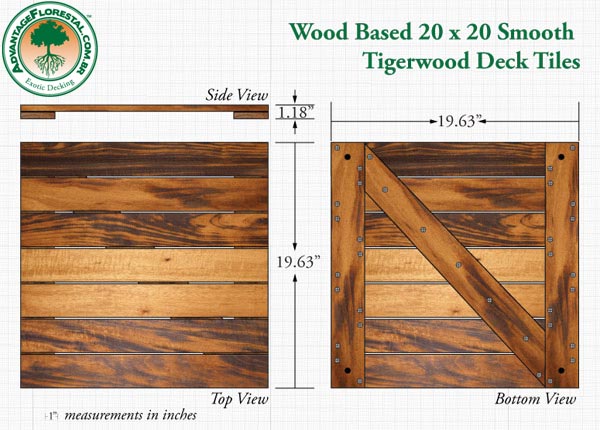 Inexpensive and easy-to-install. But those are not the only reasons why you want to buy them. Customers who remodel their old patio, balcony, or roof with Advantage Deck Tiles do so because they want a genuinely beautiful outdoor living space that lasts. While settling for painting over their existing surface is always an option, they want something better, more natural. Advantage Tigerwood Deck Tiles give you: An attractive, dynamic looking surface An easy-to-install deck that takes hours, not days All the durability & resilience of long-length hardwood decking A solid solution to renovating concrete decks & patios Years of hassle-free use without any required maintenance Built using all stainless steel hardware Many of our customers prefer to install Advantage Deck Tiles over cracked concrete patios. As you can see from the gallery below, doing so will give you an eyesore you no longer have to live with!
Inexpensive and easy-to-install. But those are not the only reasons why you want to buy them. Customers who remodel their old patio, balcony, or roof with Advantage Deck Tiles do so because they want a genuinely beautiful outdoor living space that lasts. While settling for painting over their existing surface is always an option, they want something better, more natural. Advantage Tigerwood Deck Tiles give you: An attractive, dynamic looking surface An easy-to-install deck that takes hours, not days All the durability & resilience of long-length hardwood decking A solid solution to renovating concrete decks & patios Years of hassle-free use without any required maintenance Built using all stainless steel hardware Many of our customers prefer to install Advantage Deck Tiles over cracked concrete patios. As you can see from the gallery below, doing so will give you an eyesore you no longer have to live with!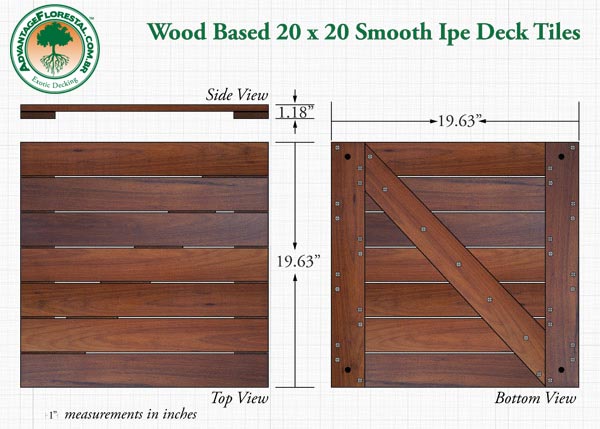 IPE deck tiles are an inexpensive and easy-to-install option for your deck. But those are not the only reasons why you want to buy them. Customers who remodel their old patio, balcony, or roof with Advantage Deck Tiles do so because they want a genuinely beautiful outdoor living space that lasts. While settling for painting over their existing surface is always an option, they want something better, more natural. Advantage Deck Tiles give you: An attractive, dynamic looking surface An easy-to-install deck that takes hours, not days All the durability & resilience of long-length hardwood decking A solid solution to renovating concrete decks & patios Years of hassle-free use without any required maintenance Built using all stainless steel hardware Many of our customers prefer to install Advantage Deck Tiles over cracked concrete patios. Our deck tiles are available in a variety of species and sizes. Most species are available in wholesale quantaties.
IPE deck tiles are an inexpensive and easy-to-install option for your deck. But those are not the only reasons why you want to buy them. Customers who remodel their old patio, balcony, or roof with Advantage Deck Tiles do so because they want a genuinely beautiful outdoor living space that lasts. While settling for painting over their existing surface is always an option, they want something better, more natural. Advantage Deck Tiles give you: An attractive, dynamic looking surface An easy-to-install deck that takes hours, not days All the durability & resilience of long-length hardwood decking A solid solution to renovating concrete decks & patios Years of hassle-free use without any required maintenance Built using all stainless steel hardware Many of our customers prefer to install Advantage Deck Tiles over cracked concrete patios. Our deck tiles are available in a variety of species and sizes. Most species are available in wholesale quantaties.